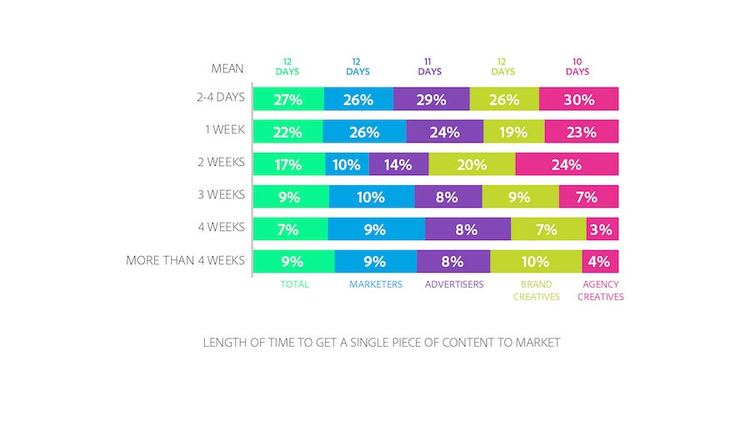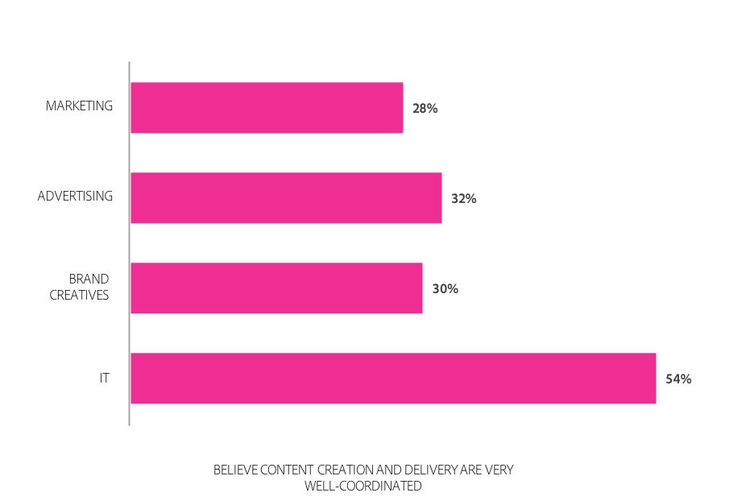New Survey from Adobe Highlights the Challenges of Accelerating Content Creation and Delivery

Do you remember the days when ‘Where’s the Beef,’ ‘We Try Harder’ and ‘The Taste of The Next Generation’ meant something to a consumer? In today’s Experience Business focused society, brands need more than taglines – they must provide experiences that personalize the brand behind that tagline for each end consumer. And creative is at the heart of this journey.
In today’s age of hyper- personalization, creatives need to produce a near-infinite amount of content to deliver the amazing experiences customers expect. However, siloed creative and marketing teams, disparate platforms, and time-intensive volume demands are making this hard to accomplish. That’s according to a just-released survey from Adobe that highlights content creation and delivery processes within enterprise brands and agencies. With input from more than 1,000 marketers, creatives, advertisers and IT professionals, the goal was to understand how well these teams were managing content velocity. The short answer: There’s room for improvement.
So, what are the main challenges according to the survey?
Time Investment
One consistent challenge was the time required for each piece of content. The survey found that creative teams are producing 28 pieces of content, on average, per week and that it typically takes 12 days to get a single piece to market, from initial request to delivery. Brand creatives say it takes about 14 hours to create one piece of short-form content; double that for long-form content.

Producing the hundreds (if not thousands) of digital assets required to deliver hyper-personalized, ‘experience-rich’ content can be near impossible without the right resources. As computational design continues to gain momentum, creatives will be able to work on content assets more holistically, freeing up time to focus on other priorities.
Personalization
While more than 90 percent of participating organizations in the survey do create content variations for different segments and channels, personalization is still a major challenge for most companies. Only 26 percent of brand creatives, 21 percent of marketers, and 24 percent of advertising pros believe their companies do enough to personalize content. The same group was twice as likely to find it difficult to personalize content at scale. Once again, they cited the time required to create and iterate on content as the biggest barrier, followed by cost.

So, what does all of this mean? My colleague Gauri Bhat, product marketing manager for Adobe Advertising Cloud says, “The writing is on the wall. For the same reasons search engine marketing is increasingly being handed over to algorithms, the same will happen across large swaths of digital experience and digital advertising. Humans and machines will need to work together to craft and deliver personalized experiences down to the 1-to-1 level. How are you going to do that when you serve up millions of ad impressions and greet hundreds of thousands of website visitors? The answer is artificial intelligence.”
The Creative and Marketing Divide
IT professionals are usually on tap to integrate technology systems across the organization. While more than half of IT pros think content creation and delivery are very well coordinated at their organizations, fewer than a third of marketers, advertisers, and brand creatives say the same. This is problematic because when these teams can’t work efficiently together, the entire content creation process slows down, and customer experiences can be negatively impacted.

It’s also imperative that brands take feedback and insights and use that information to quickly revise and optimized content. Unfortunately, feedback was another area of disconnect. Conversion metrics, direct customer feedback, and revenue impact are used to determine the effectiveness of customer experience efforts. Yet, one in five creatives say they don’t have access to this information.
While technology may be the answer for personalizing content, greater communication across all stages of content development is critical. A majority of creatives, marketers and advertisers want creatives to be involved in the pre-planning stage of content creation as well as the follow-on campaign performance reviews, not just in creation and production. They recognize that creatives should be included throughout the entire content creation and delivery process to help close the feedback loop and improve the quality of output.
With the right tools and alignment, you can overcome challenges—even time—and unleash the full power of personalized experiences. Check out the full report here.